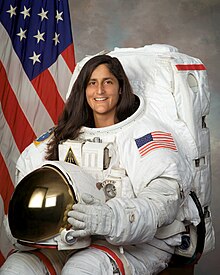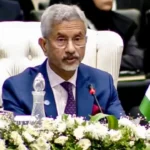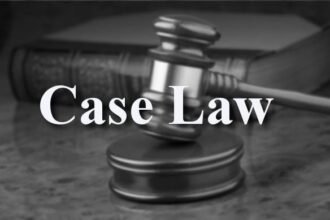Sunita Williams: A Journey Beyond Earth
Sunita Lyn “Suni” Williams is a remarkable figure in space exploration, known for her achievements as an astronaut and her dedication to science and exploration. Born on September 19, 1965, in Euclid, Ohio, she has left an indelible mark on the history of human spaceflight. In this blog post, we will explore her early life, career, accomplishments, and personal experiences, showcasing her as a trailblazer for future generations.
Early Life and Education
Sunita Williams grew up in Needham, Massachusetts, where her parents, Deepak Pandya and Ursuline Bonnie Pandya, raised her. Her father, an Indian-American neuroanatomist, and her mother, of Slovene descent, instilled in her the values of hard work and education. As the youngest of three siblings, she always sought to carve her own path.
Williams attended Needham High School, where she excelled in her studies and developed a passion for science. After graduating in 1983, she went on to attend the United States Naval Academy, earning a Bachelor of Science degree in physical science in 1987. Later, she pursued a Master of Science degree in engineering management from the Florida Institute of Technology in 1995. Williams’ educational background laid a strong foundation for her future endeavors in the military and space exploration.
Military Career
In May 1987, Williams was commissioned as an ensign in the U.S. Navy. After completing a six-month temporary assignment at the Naval Coastal System Command, she became a Basic Diving Officer. Williams then reported to the Naval Air Training Command, where she trained as a Naval Aviator and earned her wings in July 1989.
Williams was involved in several significant military operations, including overseas deployments to the Mediterranean, Red Sea, and Persian Gulf during Operation Desert Shield and Operation Provide Comfort. Her commitment and leadership led her to oversee Hurricane Andrew relief operations in Florida in 1992. By the time she graduated from the U.S. Naval Test Pilot School in 1993, she had logged over 3,000 flight hours in more than 30 different aircraft types.
A New Chapter: NASA and Astronaut Training
In June 1998, Williams’ life took an exciting turn when she was selected as an astronaut candidate for NASA. She began her training at the Johnson Space Center in Houston, Texas, where she honed her skills in various areas, including robotics, spacewalks, and emergency procedures. Her determination and enthusiasm for exploration set her apart.
Williams’ first mission came in December 2006 when she flew aboard Space Shuttle Discovery on the STS-116 mission. This mission was significant as she became part of the International Space Station (ISS) crew, joining Expedition 14. Williams completed her first spacewalk during this mission and contributed to critical construction tasks on the ISS.
Breaking Records: Spacewalks and Marathons in Space
One of Williams’ most notable achievements is her record for the most spacewalks by a woman. During her time aboard the ISS, she completed a total of seven spacewalks, totaling an impressive 50 hours and 40 minutes. This accomplishment put her in the spotlight as a pioneer for women in space exploration.
In addition to her spacewalks, Williams made headlines for running the first marathon in space. On April 16, 2007, she completed the Boston Marathon while aboard the ISS, finishing with a time of 4 hours and 24 minutes. Her fellow astronauts cheered her on, and she received updates on the marathon’s progress from her sister and friends on Earth.
Leadership Role: Commander of the ISS
In September 2012, Williams made history again when she became the commander of the ISS during Expedition 33. She was only the second woman to hold this prestigious position. As commander, she oversaw a diverse team of international astronauts and played a crucial role in conducting scientific experiments, maintenance tasks, and educational outreach activities.
During her time on the ISS, Williams continued to break records and push boundaries. She became the first person to complete a triathlon in space, using the station’s exercise equipment to simulate swimming, biking, and running. Her determination to stay fit and promote health even in microgravity inspired many on Earth.
Recent Missions and the Commercial Crew Program
Williams’ dedication to space exploration did not end with her time on the ISS. In July 2015, she was selected as one of the first astronauts for NASA’s Commercial Crew Program, which aims to develop new spacecraft for transporting astronauts to and from the ISS. Williams worked closely with Boeing and SpaceX to prepare for commercial missions, showcasing her commitment to advancing space travel.
In June 2024, she made history once again by becoming the first woman to pilot a spacecraft during the Boeing Crew Flight Test (CFT) mission. This mission marked a significant milestone in the development of commercial spaceflight, and Williams was instrumental in its success. Unfortunately, technical issues delayed her return to Earth, and she remained aboard the ISS with fellow astronaut Butch Wilmore, conducting scientific experiments and maintenance tasks until February 2025.
Personal Life and Values
Beyond her professional achievements, Sunita Williams is a woman of strong values and diverse interests. She is married to Michael J. Williams, a federal marshal in Texas, and they share a love for aviation. The couple lives in suburban Houston, where they continue to support each other’s passions.
Williams practices Hinduism and has taken significant religious symbols to space, including a copy of the Bhagavad Gita and the Upanishads. Her faith plays a crucial role in her life, and she has expressed a desire to adopt a girl from Ahmedabad, India, showcasing her commitment to family and nurturing future generations.
Honoring Heritage and Community Involvement
Sunita Williams is proud of her Indian and Slovenian heritage. She has taken symbolic items representing her cultures to space, such as the Slovenian flag and traditional foods. Williams has visited her ancestral village in India and participated in various cultural events, including speaking engagements in both India and Slovenia.
In June 2017, the Needham Public Schools committee voted to name a new elementary school after Williams, recognizing her as a role model for students. In May 2020, she engaged with over 500,000 international students through a virtual interview during the COVID-19 pandemic, emphasizing the importance of education and inspiration during challenging times.
Legacy and Impact
Sunita Williams’ journey as an astronaut and her contributions to space exploration have inspired countless individuals around the world. She has broken barriers, shattered records, and demonstrated that with hard work and dedication, anything is possible. Williams embodies the spirit of exploration and adventure, and her legacy will continue to influence future generations of scientists, engineers, and astronauts.
Conclusion
As we reflect on Sunita Williams’ incredible life and achievements, it is clear that she is more than just an astronaut; she is a symbol of perseverance, resilience, and the limitless potential of humanity. Her journey from a small town in Massachusetts to the vastness of space serves as a reminder that the sky is not the limit; it is just the beginning. Williams’ story encourages us all to dream big, work hard, and reach for the stars.







